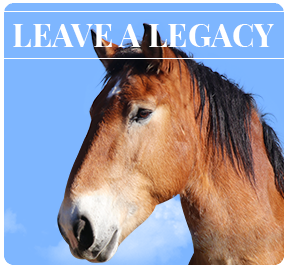ACUPUNCTURE
Acupuncture therapy has been used widely and continuously for an estimated 5,000 years for more than one quarter of the earth’s population. There is quite possibly more total experience with acupuncture than any other form of medicine. Acupuncture is currently used in most parts of the world as a medicalsystem of its own, or to complement modern health care modalities. It is used to treat most known diseases, similar disorders/diseases in animals, and other applications too numerous to mention.
HOW ACUPUNCTURE WORKS
When the free flow of energy is disrupted or unbalanced in any way, by emotions, diet, climate, over/under work, trauma, infection, heredity, or accidents, disease will manifest because good health depends upon a harmonious and sufficient flow of energy to all parts of a body. By stimulating acupuncture points, treatment can directly affect the energy and restore balance and health.
Energy is often directed to or taken away from varying parts of an organism’s stock of energy in different ways. The intent, skill, knowledge, training and experience of the practitioner should make a patient feel relaxed and at ease. Trust your intuition or the reactions of your animal toward a practitioner.
Acupuncture is best utilized as a preventative medicine, since an imbalance will manifest energetically before there is structural change. Once can avoid much pain and suffering by incorporating acupuncture “tune-ups” on a 4-6 week basis. This keeps a body energetically balanced and less likely to invite, encourage or fall prey to disease, discomfort, injury, etc…
FREQUENCY OF TREATMENT
Each case is totally unique, but the rule of thumb is that 4-6 treatments (a “course”) for most cases will either alleviate the condition completely or give the acupuncturist a very good idea of how many treatments or “courses” are needed. Very rarely, acupuncture just simply does not work in an individual, or the effects are minimal. In a case like this, the person or animal owner should seek another modality (or practitioner) more suited to them. The first 2-3 treatments usually tell what is needed to know to make a more accurate evaluation, and the most dramatic results regularly come from these first treatments.
Many people ask if one must believe in acupuncture or Oriental phylosophy for acupuncture to be effective. Absolutely not! One has only to see the profound effects of acupuncture treatment on animals to be convinced of its effectiveness.
IS ACUPUNCTURE PAINFUL?
Acupuncture, in the vast majority of cases, is not painful at all…quite the opposite!
Both human and animal patients generally leave feeling calm, relaxed, elated, or euphoric after a treatment. These effects can last 2-12 hours. The needles used are about as thin as a few shafts of hair. We use “human” needles on the horses we treat. Some equine practitioners use much heavier gauge and longer needles. In the many years we’ve practiced on horses and other animals, we have found that theses often painful, large needles are absolutely not necessary and, in fact, cause more trauma than a positive effect. Again, acupuncture should be a pleasant experience, not one filled with stress, pain, or anxiety. Our motto is: “What would not be done to a human patient should not be done to an animal patient”.
*************************************************************************
LOW LEVEL LIGHT THERAPY
Low level light therapy (LLLT) is a term used to describe both LASER and non-LASER light therapies. There are many LLLT systems used today in both human and animal therapies, but for our purpose, we will be discussing LLLT in general and the THOR DD LASER SYSTEM specifically.
A LASER (Light Amplification by Stimulated Emission of Radiation) is a device that emits a special form of light. The light is special because it consists of light waves of a single wavelength in which all the waves reinforce one another. This is known as COHERENT light. Coherent light has wavelegnths from 830 nanometers (nm) to 950nm.
Our machine (the THOR DD) incorporates both LASER and LED (Light Emitting Diodes) probes. Our 500mW LASER probe generates light at a wavelength of 810nm; meaning that without special viewing equipment, one cannot see it. The LED probe generates light with wavelengths of 660-950nm respectively.
The lower wavelengths (600-700nm) appear to have more beneficial effect on wound healing and skin conditions. The high wavelengths (800-950nm) appear to have a more beneficial effect on soft tissue injuries. For penetrating and stimulating acupuncture points, we use the higher powered and more foucsed LASER probe.
Treatment times (with our THOR DD) vary from patient to patient, according to the condition being ttreated, but a good rule of thumb would be 10-15 minutes. Less powerful LLLT devices can take up to 5 minutes per point and/or 30 minutes per area being treated, which is not practical for practitioners, but may be suitable for, and certainly more affordable for, owners, trainers, grooms, etc..
*************************************************************************
REIKI: A BRIEF OVERVIEW
While hands-on healing is as old as humankind, at some point in time, we appear to have lost the knowledge of how to use the remarkably powerful healing gift. It was “rediscovered” by Dr. Mikao Usui during the 21 day retreat t oMt. Kurama, Japan, shortly after the turn of the last century.
Reiki, pronounced “ray-key”, is a natural healing technique that makes use of the laying on of hands. Reiki is made up of two Japanese words, “rei” meaning universal/divine life energy, and “ki” meaning life force energy. Thus, Reiki is spiritually guided life force energy. While Reiki is spiritual in nature, it is not a religion.
Reiki is a simple technique to learn. There are three levels of knowledge and this is passed on through “attunements” given by a Reiki Master/Teacher (level 3). No prior experience in healing work is necessary. The use of Reiki does not depend on one’s intellectual ability or level of spiritual development. A person can begin using Reiki after the attunement of the first level, called Reiki 1.






